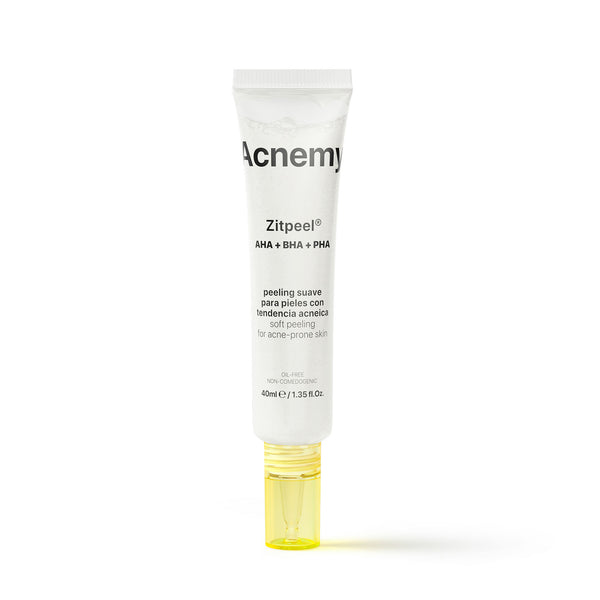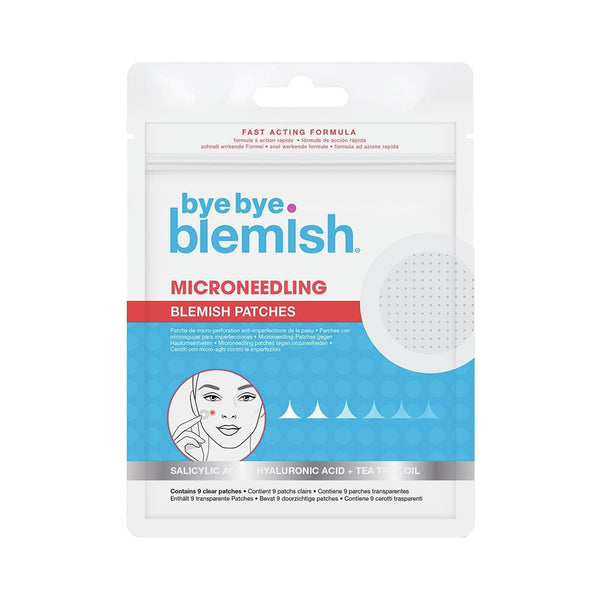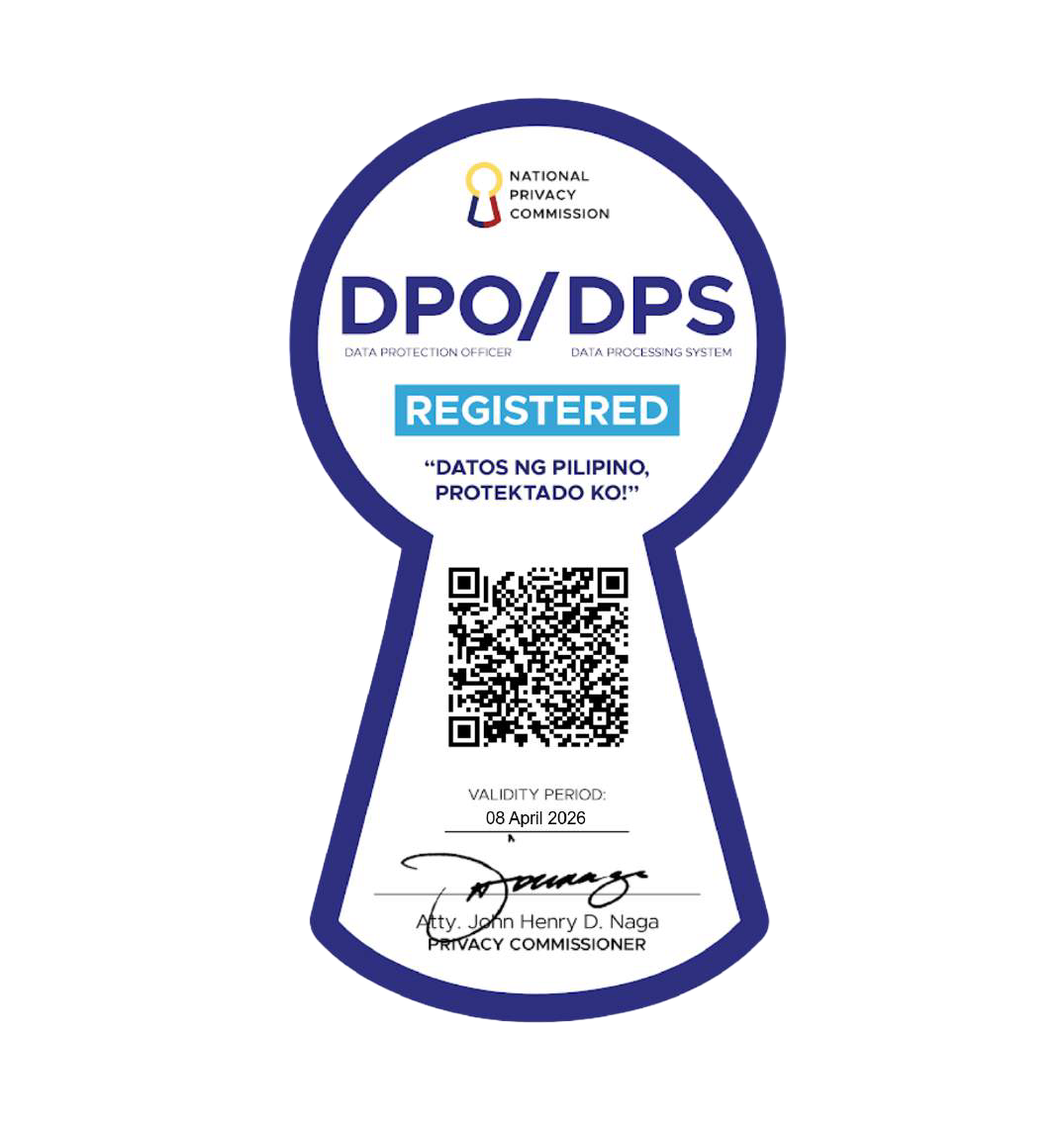
All About Acids
Acids are one of the most common ingredients in beauty products. They're used to gently exfoliate and cleanse your skin, but what do they really do? Acids can have a positive (and sometimes, volatile!) impact on your skin depending on how they're formulated and used. In this post we'll break down what acids are and why they matter so much in the skincare world today 🔬
🥛 Alpha hydroxy acids (AHAs)
Alpha hydroxy acids (AHAs) are derived from fruits and milk. They are water soluble, which means they can be easily washed away with soap and water. They work best for dry & dehydrated skin as they enhance moisture in the skin. AHAs work by loosening dead skin cells, which can cause pimples or other blemishes on your face or body to become visible again after they've been gone for some time.
An acne treatment with an AHA will typically include glycolic acid (the most common type), lactic acid, mandelic acid or citric acid as part of its formula. The idea behind using an AHA as an acne treatment is that it helps to exfoliate the top layer of dead skin cells off your face without causing irritation like benzoyl peroxide does when used regularly over time, but just make sure to use it with sunscreen as it increases the skin's sensitivity to the sun. AHAs work best at a concentration between 4-10% and pH between 3-4.
Here are the most commonly found and used AHAs:
- Glycolic Acid – One of the most effective AHAs, glycolic acid is able to penetrate the skin at a deeper level due to its small molecular size. It is very common but can also irritate those with sensitive skin.
- Lactic Acid – With a slightly larger molecular size, lactic acid exfoliates the skin with less irritation than glycolic acid. Lactic acid is preferred by sensitive skin types or skincare beginners.
- Mandelic Acid – With a bigger molecular size (twice as large as Glycolic acid), mandelic acid is a lot less irritating and is considered best for people with very sensitive skin.
- Citric Acid – It’s an AHA that is most commonly used in skincare products as a pH adjuster. It does have exfoliating properties but is not as commonly used. The other AHAs are considered gentler and are better researched.
Your BBar AHA fix:
The inclusion of the powerful AHA will help to reduce acne breakouts, the appearance of wrinkles and pores, and ensure smooth like baby skin. Aging who? We don’t know her!
🅱 Beta hydroxy acids (BHAs)
Beta hydroxy acids (BHAs) are an excellent choice if you have oily to combination skin. They're oil-soluble, which means that they can penetrate the skin more deeply than AHAs. This makes them great for acne-prone skin! BHAs also help treat blackheads and whiteheads because they exfoliate away dead cells from inside pores without irritating them.
One thing to note about BHAs: look for products with a concentration between 1-2% and a pH range between 3-4; otherwise, it may be too harsh for your complexion. The most common BHA out there is Salicylic acid.
Here's a BHA product worth considering:
Volcanic Ash Drying Lotion is an on-the-spot dual action treatment that detoxifies skin to skin revitalizer that helps balance natural oils.
🦠 Polyhydroxy acids (PHAs)
PHAs, or polyhydroxy acids, can be found in most of the same products you would find AHAs. They're milder than alpha hydroxy acids and as effective at exfoliating your skin as AHAs but more compatible with sensitive skin types, and don't increase your skin's sensitivity to the sun.
- Gluconolactone: The most popular of the PHAs, gluconolactone not only works to exfoliate your skin, it also hydrates and may offer some antioxidant benefits. It is often used for its ability to dissolve sebum clogs on oily complexions.
- Lactobionic acid: An oxidized form of milk, this acid works as both an exfoliator and a humectant, meaning it helps your skin retain moisture. It's commonly found in anti-aging products to help firm and strengthen the skin.
- Galactose: This PHA may sound familiar to you — that's because it's the sugar found in milk. This one is a bit less common than the other two, but it works to exfoliate your skin just as gently.
Renew the look of your skin and fight acne breakouts with this new exfoliating soft peeling. A combination of AHA, BHA and PHA acids works as a skin-clearing action treatment for acne-prone skin, thus, gently exfoliating the skin, minimizing zit marks and unifying the skin tone.
🌾 Azelaic acid
Azelaic acid is a naturally occurring acid found in barley, wheat, and rye. It's also present in skin care products—and it can be a gentle leave-on exfoliant that unclogs pores and refines skin texture.
Azelaic acid may also reduce redness and closed comedones (whiteheads), though its effectiveness isn't as strong as salicylic acid or glycolic acid. Look for 10% azelaic acid when starting out for OTC products, then you can get prescriptions for azelaic acids that have a concentration between 15-20%.
Because it takes some time to take effect, azelaic acid by itself isn’t typically a dermatologist’s first choice for treating acne.
Two top ingredients complement this formula: Salicylic Acid and Azeloglycine (azelaic acid + glycine), which gently exfoliate the skin, control acne, excess sebum and prevent acne from appearing.
🧪Tranexamic acid
Tranexamic acid is a prescription medication used to treat acne, wound healing and melasma (the darkening of the skin). It can also be used to treat aging skin.
Tranexamic acid is not commonly available, but it's similar to hydroquinone in its ability to lighten skin discolorations and age spots by inhibiting tyrosinase activity. Topical doses range from 2-5% when combined with other topical treatments such as tretinoin cream or retinoids like metronidazole gel; however some people may experience irritation or redness if applied excessively for extended periods of time at high concentrations.
🍚 Kojic acid
Kojic acid is a byproduct of the fermentation of rice and soybeans. It has been used to treat hyperpigmentation, but it's not as irritating as hydroquinone.
There are some kojic acid soaps out there recommended by dermatologists every so often.
Kojic acid is a byproduct of the fermentation of rice and soybeans. It has been used to treat hyperpigmentation, but it's not as irritating as hydroquinone.
Known side effects:
- Skin irritation (itching, burning, stinging)
- Redness and swelling at the site of application
- Dryness or cracking of skin that may occur after long term use
🍊 Ascorbic acid
Ascorbic acid is a form of Vitamin C that may be found in both fruits and vegetables. It's also known as L-ascorbic acid, but it can be found in other forms as well, including sodium ascorbate or monohydrate (which has been shown to have more anti-aging benefits than pure ascorbic acid).
As an antioxidant, ascorbic acid helps fight free radicals throughout your body—and it does so naturally with no side effects! Ascorbic acid also works to improve skin texture, even out skin tone; stimulate collagen production by making sure you're getting enough sunlight on your face every day; reduce inflammation caused by broken capillaries under the eyes (wrinkles); protect against sun damage caused by UV rays (sunspots); prevent rosacea symptoms like redness/flushing when exposed to too much anger/stress during daily life activities like work meetings or school classes...the list goes on! If used daily over time, you can see significant results in as little as three months.
However, using ascorbic acid has its caveats. It's unstable and gets oxidized easily, which is why it should be kept in a dark, cold area away from sunlight. Because of how it fights against the sun, apply it in the morning before heading out to maximize the results – just make sure you don’t leave your bottle out! Get ascorbic acids with a pH of 2.5-3.
Ascorbic acid usually comes with Vitamin E and Ferulic acid for formula stability and antioxidation. A mix of 15% L-Ascorbic Acid, 1% Vitamin E and 0.5% Ferulic Acid, can increase the efficacy of Vitamin C by around 8 times.
The Vita-0C Eyes Dark Circle Corrector is a gold-stabilized vitamin C eye serum with a one-of-a-kind Vita-C Complex enhances L-ascorbic acid stability and potency, and light-reflecting micro-minerals to instantly brighten and fight the look of dark circles in as little as 2 weeks.
An overnight restorative gel-cream sleeping mask that delivers moisture and smoother skin as it works throughout the night. Wake up with more radiant and hydrated skin! Hydrolyzed Collagen & Elastin hydrates and restores the appearance of firmness and tone 💅🏻
🍷 Ferulic acid
Ferulic acid is a powerful antioxidant that has been shown to protect against the damage caused by free radicals. It’s also used to improve the stability of formulations containing vitamin C, vitamin E and other antioxidants.
Fun fact: ferulic acid isn't just for skin care products; it can be found in many food items such as red wine, berries and fruit juice!
🥩 Alpha lipoic acid (ALA)
Alpha lipoic acid (ALA) is a natural antioxidant that can help to fight free radicals. It’s also known as the “universal antioxidant,” because it helps neutralize damaging compounds in the body such as peroxides and hydroperoxides.
Alpha lipoic acid has been shown to treat uneven skin tone, dullness, and fine lines by promoting collagen production in the skin while helping cells hold onto valuable antioxidants like glutathione and Vitamin C. The maximum concentration you should go for is 5%.
ALAs can be often found in red meats, broccoli, spinach, tomatoes, and more! Research suggests that ingesting these sources of ALAs may also play a role in weight loss, and treating diabetes and other health conditions.
🥕 Retinoic acid (Retinol)
Retinoic acid is a form of vitamin A. It’s used to treat acne, fine lines and wrinkles, and some forms of psoriasis. Retinoic acid can cause redness, irritation and drying; however it also has benefits for your skin if used correctly.
Skin cells produce this chemical naturally but they need it in order to repair damaged cells on the surface layer. Retinoic acid is available over-the-counter or prescription strength forms such as tretinoin which has been shown to reduce fine lines especially around the mouth area where there are lots of tiny muscles involved.
Make sure to use sunscreen with this as it increases your skin's sensitivity to the sun!
Check these out:
6x Retinol Super Serum restores the look of smooth, beautiful and glowing skin with 3 Million I.U.’s of Retinyl Palmitate.
Concentrated super serum with pure retinol and vitamin e that revitalizes skin overnight and improves the appearance of visible signs of aging and pores.
💦 Hyaluronic acid
Hyaluronic acid is a naturally occurring substance in the body. It’s a good moisturizer: it can also hold up to 1,000 times its own weight in water. Hyaluronic acid is found in the skin, joints and eyes as well as other places where moisture needs to be maintained; that means you can get some benefit from this ingredient even if you don’t have dry or oily patches!
Hyaluronic acid draws moisture from its surroundings but doesn't provide extra hydration like some other moisturizers do—which makes it an excellent hydrator for all skin types.
Our top picks to give you uber hydration:
A versatile serum that gives skin its daily dose of moisture for soft, smooth, youthful-looking skin. Formulated for all skin types, this hydrating serum infuses skin with essential hydration to help plump and minimize the appearance of fine lines and wrinkles.
This moisturizing foaming face wash works into an ultra-dense creamy lather to gently lift away makeup and impurities without stripping the skin. Momopuri's signature blend of peach ceramide and probiotic Lactobacillus E-12 strain strengthens skin's natural moisture barrier and plumps skin. Peach leaf extract (from peaches grown in Nagano, Japan), bergamot fruit extract, hyaluronic acid, and vitamins C, A, and E help tighten pores while nourishing the skin.
Microneedling Blemish Patches provide more focused rejuvenation to renew the look of beautiful skin. Enjoy a set of nine serum-dissolving micro tips that melt deep into the skin’s surface to target stubborn, active blemishes. Each patch is also formulated with hyaluronic acid to assist with skin repair ✨
🥣 How to mix different acids in your skincare
There are a lot of different acids out there, so it can get confusing trying to figure out which ones are right for your skin. But don't worry! Mixing acids is an easy process that allows you to customize your skincare routine as needed.
One thing we want you to keep in mind when mixing different acid products together is that everyone reacts to different formulations in their own way. If you're using a product with salicylic acid and don't see any improvements after several weeks, try adding another product from the same category until you find one that works best for your skin type. Sometimes, trial and error would be the best way to figure out the holy grail product you need!
For a more structured approach to formulating your skincare routine, the wonderful world wide web has got some tricks up its sleeve. SkinSort is a website with an innovative and powerful skincare routine checker tool that notifies you if certain products might not work together for its analysis of your skin:

There’s a premium subscription available, but the free one is enough for you to analyze the effectiveness of any routine you want to try!
We hope that this guide will help you along your journey to #GlassSkin, #bbarbabe! 😘
You might also like
More Articles Like This
1
BeautyBar’s Holiday Picks: Gifts That Sparkle and Shine
Dec 17, 24
The holiday season is here, and there’s nothing like finding the perfect gifts for the people you love—or treating yourself! At BeautyBar, we’ve curated a selection of holiday kits, festive-themed goodies, and timeless treasures that are perfect for this magical time of year.
Whether you’re looking to pamper your loved ones, surprise a friend, or indulge in some self-care, we’ve got you covered. Explore our top picks for the season below!
Read more
2
Celebrating Beauty: Our Anniversary Event Recap!
Nov 21, 24
Read more
3
How to Use Reusable Cotton Pads Properly
Dec 12, 23
Read more



































































